

Nature
and Nature's laws lay hid in night.
|
Sir Isaac Newton, born the year Galileo died (1642), discovered the key laws of physics that are required to complete the picture of planetary motion. He also developed an entire new branch of mathematics called calculus to help him explain what he saw (From APOD http://antwrp.gsfc.nasa.gov/apod/ap960707.html). See also http://www.maths.tcd.ie/pub/HistMath/People/Newton/RouseBall/RB_Newton.html, http://www-groups.dcs.st-and.ac.uk/~history//Mathematicians/Newton.html
Key points: Newton's Laws; why they "solved" the problem of planetary motions in a scientific sense
Newton summarized his discoveries as three laws of motion and the law of gravity.
Newton’s First Law of Motion was discovered earlier by Galileo:
Unless an object is acted upon by an outside
force, the object will stay at rest if already at rest ![]() or will continue moving in a straight line at constant speed. Watch the driver!
or will continue moving in a straight line at constant speed. Watch the driver!

(this is the Law of Inertia) (from The Physics Classroom, http://www.physicsclassroom.com/mmedia/newtlaws/cci.html)
Another way of stating the first law is that an acceleration must be present to change an object’s velocity.
Newton’s Second Law of Motion: The force required to accelerate an object is proportional to its mass.
In equation form, F = ma.
Newton’s Third Law: When object X exerts a force on object Y, object Y exerts an equal and opposite force back on X.
If Newton’s Third Law didn’t hold, rockets wouldn’t work!
(A rocket is propelled forward because the hot gases expanding backwards out of its engine
exert a force on the rocket in the opposite direction causing the rocket to move forward).
Test how well you understand them ![]()
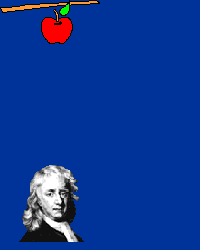 |
 |
It is claimed that Newton saw an apple fall from a tree and suddenly realized that the same force might keep the moon in orbit. He realized that orbiting the earth is just a case where the object’s velocity is so high that it ‘falls around the earth’:(From U. Tenn Ast. 161, http://csep10.phys.utk.edu/astr161/lect/history/newtongrav.html)
 |
Here is Newton's own drawing of a thought experiment where a cannon on a very high mountain (above the atmosphere) shoots a shell with increasing speed, shown by trajectories for the shell of D, E, F, and G and finally so fast that it never falls to earth, but goes into orbit. (From M. Fowler, http://galileoandeinstein.physics.virginia.edu/lectures/newton.html) |
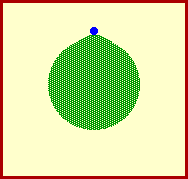 |
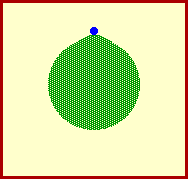 |
In the examples to the left, the projectile is launched at less than 8000 meters/second, and it falls to earth (speed is higher in the right case than the left one). (from The Physics Classroom, http://www.physicsclassroom.com/mmedia/newtlaws/cci.html) |
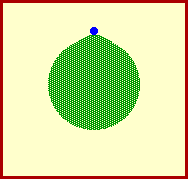 |
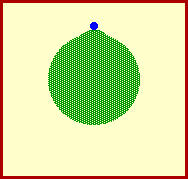 |
In the far left example, the launch speed is just 8000 meters/second, and the projectile goes into a circular orbit. On the left, the speed is higher and the orbit is elliptical. |
To try this experiment for yourself, and if your computer is Java applet enabled, go to http://galileo.phys.virginia.edu/classes/109N/more_stuff/Applets/newt/newtmtn.html
You may want to contrast Newton's laws with some less successful
versions![]() (From http://ousd.k12.ca.us/~codypren/cartoonlaws.html)
(From http://ousd.k12.ca.us/~codypren/cartoonlaws.html)
Newton realized that for an object to move along an elliptical or circular path, the force that causes the object to change direction constantly instead of moving in a straight line is gravity.
Newton was able to take his law of gravity,

and derive Kepler’s three laws and make them more general so that they could be applied anywhere in the universe, not just in the solar system. The details are a bit complicated: Newton invented calculus to carry out the proofs.
The variation in the strength of the gravitational force with distance explains why planets move faster when closer to the sun – the gravitational force is greater and so a planet is accelerated when it moves closer (from Journey Through Astronomy, http://csep10.phys.utk.edu/). The solution for orbits in an inverse-distance-squared force yields ellipses, and with the right period-distance relation.

With Newton, we finally have the
complete solution to the problem of the motions of the planets. Based on a few simple and
widely applicable physical laws (and any amount of mathematics that is
necessary!) we can show exactly how and why the planets move.![]()
Read about Newton and astrology![]()
Test your understanding before going on![]()
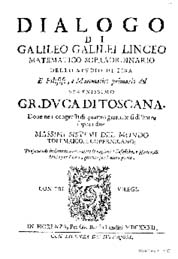 "Dialog
Concerning the Two World Systems" "Dialog
Concerning the Two World Systems" |

Time magazine cover on scientific vs. religious approaches, from http://www.trinity.edu/mkearl/knowledg.html |
|
Click to return to syllabus |
||
| Click to return to Galileo | hypertext |
Click to go to Scientific Method |